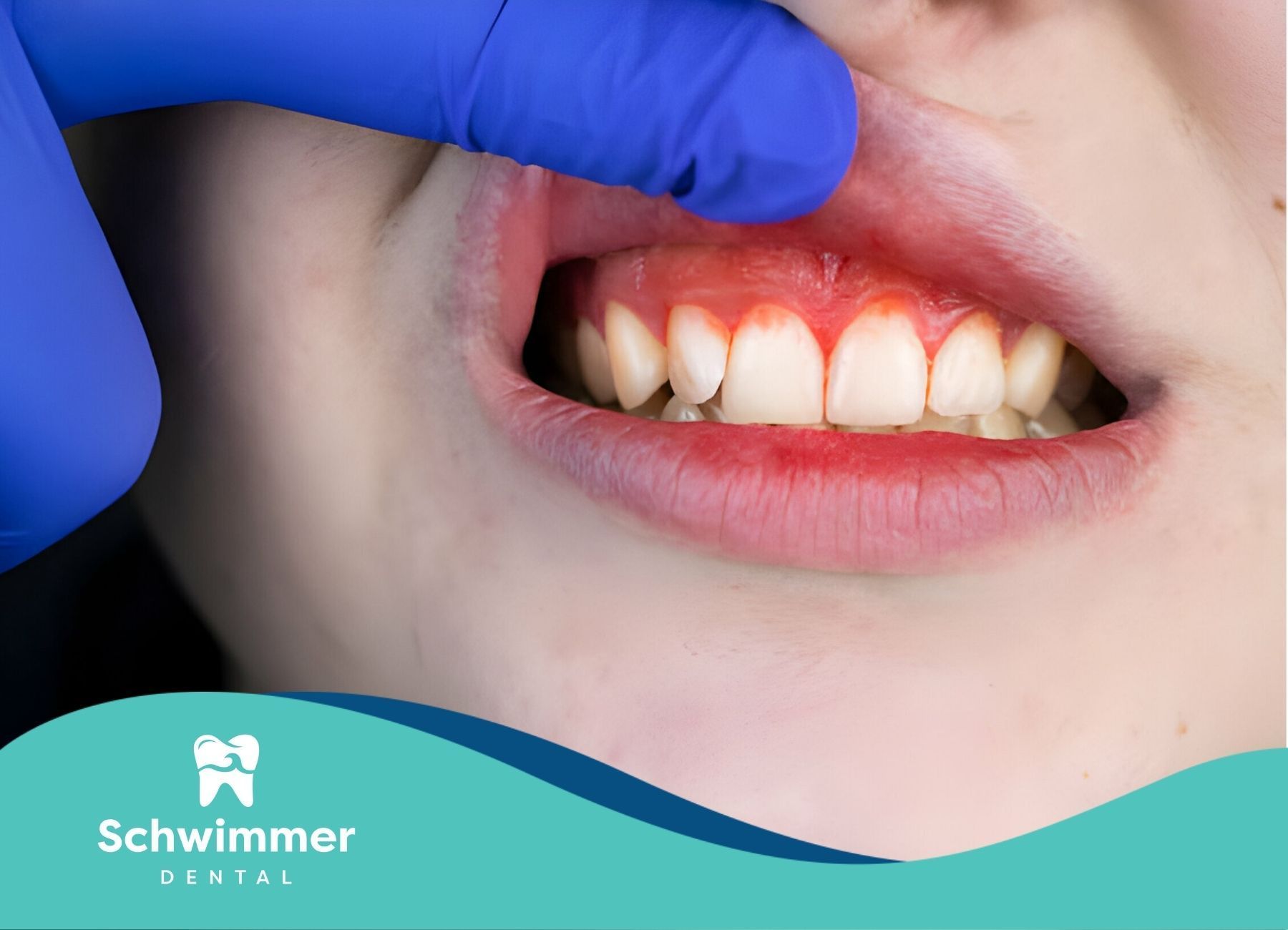Dental Implant Process Explained: What to Expect During Procedure
A dental implant is a man-made root for a tooth. It serves as a base for a new tooth, like a crown, bridge, or denture. Dental implant surgery is an outpatient procedure that involves placing the implant into your jawbone.
If you are thinking about this treatment, you may wonder what is the process for a dental implant and how long does a dental implant procedure take. This guide will explain the dental implant process step by step, outlining everything from preparation to recovery. By understanding the dental implant healing process, you can ensure the best results and long-term success.
Understanding Dental Implants
Dental implants are a popular choice for replacing missing teeth, including those affected by decay or damaged roots. Unlike dentures or bridges, implants are surgically placed into the jawbone, providing a strong foundation for artificial teeth.
The dental implant process starts with the implant post being embedded in the jawbone. Over time, the post integrates with the bone, creating a stable base for replacement teeth. This seamless fit allows the new teeth to function like natural teeth, improving your ability to bite, chew, and speak with confidence. Additionally, dental implants blend in naturally with your existing teeth, offering an aesthetic solution that restores your smile.
Why Replacing Missing Teeth Is Important
Missing teeth can negatively impact oral health and overall well-being. Without proper treatment, the bone surrounding the missing tooth can begin to deteriorate, causing bone loss and altering facial structure. This change may lead to shifting teeth, which can disrupt your bite and even result in additional tooth loss.
Additionally, missing teeth can make it difficult to chew food properly, potentially causing digestive issues. Speech clarity and self-confidence may also suffer. By addressing missing teeth promptly with a step by step dental implant procedure, you can maintain your oral health, facial structure, and quality of life. Implants also prevent further bone loss, allowing you to eat, speak, and smile confidently.
Overview of Dental Implant Components
A dental implant system has three main parts that work together to make a replacement tooth that looks and works like a real one.
The dental implant, a titanium implant, is a small post made of titanium. This post acts as the root of the artificial tooth. It is surgically placed into the jawbone, where it connects with the bone over time.
After the implant is secure, an abutment is attached. This piece connects the implant to the replacement tooth. It sticks out just above the gum line, giving support and a strong point for the artificial tooth.
The last part is the artificial tooth or crown. It is made to look like your natural teeth in shape, size, and color. It is attached to the abutment, finishing the process and giving you back your smile.
Preparing for Your Dental Implant Journey
Preparation is crucial for a successful dental implants procedure timeline. During your initial consultation, your dental specialist will assess your oral health and discuss your goals. This step includes evaluating your jawbone’s condition to determine its suitability for the implant. If needed, a bone graft or sinus lift may be recommended to build a solid foundation for the implant.
Your personalized plan will also cover any necessary pre-surgical treatments, such as tooth extractions. With a thorough understanding of the dental implant process timeline, you can confidently take the first step toward restoring your smile.
Finding the Right Dental Specialist
Choosing the right dental specialist is very important for a good dental implant experience. It is needed to find a skilled oral surgeon or periodontist who focuses on implantology. These specialists have extra training in the important surgical techniques needed for dental implant placement.
When picking a dental specialist, looking at their qualifications, experience, and what patients say about them is a good idea. Knowing how many dental implants they have done and their success rates can help you better understand their skills. Also, finding a specialist who values patient education and clear communication can make you feel more comfortable during the process. Trusting your dental specialist's skills and communication can make a difference in your dental implant journey.
What You Need Before Starting
Before starting the dental implant process, your dental specialist will check your oral and overall health, including the condition of your jawbone. They will look closely at your medical history. They will ask about any medical conditions, the medications you take, or any allergies you have. This helps find any risks, including the risk of complications, that could affect how well the implants work.
Your dental history is also important. The specialist will look at your oral hygiene habits, how your teeth and gums are doing, and the strength and amount of your jawbone to determine if you are a good candidate for an implant. A complete exam, sometimes using X-rays or 3D images, helps the specialist see how healthy your jawbone is, which is key to supporting the implant and ensuring your overall oral health.
Good oral hygiene is very important before and after the process. It helps with healing and makes sure the implants last a long time.
What is the Process for a Dental Implant? Step-by-step Guide
The dental implant process at Schwimmer Dental is a comprehensive, multi-step procedure designed to give you a permanent and natural-looking solution for missing teeth. Below is an expanded breakdown of each phase of the dental implant journey, including what you can expect along the way and an approximate timeline to guide you through the process.
Step 1: Initial Consultation (1st Appointment)
Timeline: Day 1
Your journey begins with a consultation with Dr. Schwimmer. During this visit, we will thoroughly evaluate your oral health, medical history, and discuss your goals. Dr. Schwimmer will explain the implant options available to you and answer any questions you may have.
A 3D scan or X-ray will be taken to assess your bone structure and determine the best course of action for your implants. If there is insufficient bone, Dr. Schwimmer may recommend a bone grafting procedure to ensure the implant has a stable foundation.
What Happens:
- Review of your medical and dental history
- Comprehensive oral examination and X-rays/CT scans
- Discussion of your goals and expectations
- Custom treatment plan creation based on your unique needs
Step 2: Preparation for Implant Surgery (Varies by Patient)
Timeline: 1-2 Weeks Before Surgery
Once we’ve confirmed your suitability for dental implants, we’ll move forward with the preparation phase. If necessary, this phase may involve procedures like tooth extractions, bone grafting, or bone graft procedures such as sinus lifts. These procedures are important to ensure that there is enough healthy bone to support the success of the implant. If these treatments are needed, healing time may take several months before we proceed with the implant surgery.
What Happens:
- Bone Grafting (if needed): If your jawbone is insufficient for implants, bone grafting will add volume to the area. This procedure may take several months to heal and integrate fully.
- Tooth Extractions (if needed): If damaged or decayed teeth are present, they may need to be extracted before implant placement.
- Sinus Lift (if needed): A sinus lift might be necessary to create enough space in the upper jaw for upper arch implants.
Step 3: Implant Placement Surgery (Surgical Appointment)
Timeline: 1 Day
The actual implant placement surgery is typically performed under local anesthesia or sedation to ensure your comfort. During this procedure, Dr. Schwimmer will surgically place a titanium or zirconia post into your jawbone. This post serves as the root for the new tooth. If you’re receiving All-on-4 dental implants, 4 implants will be strategically placed to support a full arch of prosthetic teeth in a single visit.
What Happens:
- Surgical placement of the implant post into the jawbone
- Suturing the gum tissue to allow for healing
- Temporary restoration may be placed to protect the implant area (if necessary)
Healing Note: The healing process after implant placement is essential for the implant to integrate with your bone, a process called osseointegration. This typically takes about 3 to 6 months for the bone to fully fuse to the implant post.
Step 4: Healing and Osseointegration (3-6 Months)
Timeline: 3 to 6 Months
After the implant post is placed, the healing process begins. During this time, the various types of implants will fuse with your jawbone through osseointegration. This process is crucial as it ensures the implant is securely anchored and able to function like a natural tooth root. It is recommended to consume soft foods during this initial healing period. You may need to visit Schwimmer Dental periodically for follow-up appointments to ensure the implant is healing properly.
What Happens:
- The implant post integrates with the jawbone
- Periodic check-ups to monitor progress (no need for surgery at this stage)
- Temporary restoration (if placed) is removed once the implant site is fully healed
Step 5: Custom Abutment and Crown Placement (1-2 Appointments)
Timeline: 1-2 Weeks After Osseointegration (Depending on Healing)
Once your implant has successfully integrated with the bone, Dr. Schwimmer will take impressions of your mouth to create a custom crown or bridge that will match the shape, color, and size of your natural teeth. A temporary crown may be placed while the custom abutment is made and will be placed on top of the implant post to securely hold the permanent crown. After the abutment is placed, the final crown or bridge will be attached.
What Happens:
- Impressions of your mouth are taken to create your custom crown or bridge.
- Placement of the abutment to secure the final restoration
- A custom crown or bridge is placed, completing the implant process
Step 6: Final Checkup and Aftercare
Timeline: Ongoing
Once your dental implant and restoration are in place, you will undergo a final checkup to ensure everything is functioning properly and that you’re satisfied with the results. Dr. Schwimmer will provide dental implant aftercare instructions, including properly caring for your new implants. Regular follow-up visits will be scheduled to monitor your progress and ensure the longevity of your implants.
What Happens:
- Final checkup to ensure proper fit and function
- Care instructions for daily maintenance of your implant
- Long-term maintenance plan to ensure the success of your implant

| Stage | What Happens | Timeline |
|---|---|---|
| Consultation | Comprehensive evaluation, X-rays, and treatment planning | Day 1 |
| Preparation | Bone grafting, tooth extractions (if necessary) | 1-2 weeks before surgery |
| Implant Placement Surgery | Implant post placement and suturing | 1 day |
| Healing Period | Osseointegration, periodic check-ups | 3 to 6 months |
| Crown/Abutment Placement | Custom crown and abutment placement | 1-2 weeks after healing |
| Final Checkup and Aftercare | Post-treatment checkup and long-term care instructions | Ongoing |
By following this timeline, you can expect to have a fully restored smile with dental implants in as little as a few months, depending on your specific needs and treatment plan. At Schwimmer Dental, we prioritize your comfort and success, ensuring that each dental implant procedure steps is smooth and well-managed. Let us help you regain the smile you deserve!
Conclusion
Understanding the dental implants procedure step by step helps you make informed decisions and prepares you for the journey ahead. Whether you’re replacing a single tooth or opting for a full-mouth restoration, knowing the steps in dental implant procedure ensures a successful outcome. For those searching for dental implants near me, partnering with an experienced team can make the process seamless and rewarding.
Let this guide help you take the first step toward a healthier, more confident smile. Follow the dental implant process with your trusted specialist to achieve long-term success.
Understanding the dental implant process is key to feeling confident about restoring your smile. From the initial consultation to the final placement, dental implants provide a durable, natural-looking solution for missing teeth. If you’re searching for dental implants near me, it’s important to choose a provider who prioritizes your comfort and ensures precision at every step. With the right dental team, you can achieve a seamless experience and a smile that feels as good as it looks.
Frequently Asked Questions
How long is the process for dental implants?
The dental implant process usually takes a few months, particularly after a tooth extraction if necessary. This is because healing is needed for osseointegration. However, the time it takes can be different for each person. It depends on the number of implants placed and the complexity of the case.
Is the Dental Implant Procedure Painful?
The dental implant procedure is usually done with local anesthesia or general anesthesia. This helps you feel comfortable and pain-free while the surgery happens. If you experience any discomfort or minor bleeding after the procedure, your dental specialist can help you with over-the-counter pain relievers.



